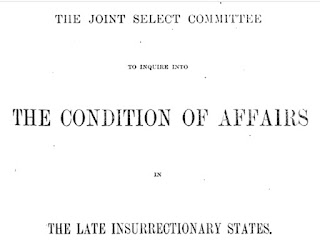Unfinished top: 82" x 78"
Striped furnishing fabrics
The fabrics are probably after 1820---quilts may be 1830-1850.
The border on the finished---and worn---star quilt is the same floral stripe
and the inner border here is also found in the unfinished top.
Addie Rawlinson Stokes Mayfield (1916-1999)
She believed they'd been made by one of two ancestors, either Jane Cynthia Moore Rawlinson and/or Adeline Hutchison Caldwell, both of whom were of the right age to have made quilts in the 1830-1850 period.
The line of descent from Find-A-Grave
Both were residents of Rock Hill in what is now York County up by the North Carolina line. Jane's daughter's obituary tells us that she was born "at the old homestead a few miles from the city" of Rock Hill. The nieghborhood was Ebenezer.
This Rawlinson/Hutchinson Home built about 1850 no longer exists
The likely maker, Addie's great-grandmother Jane (Jennie) Cynthia Moore Rawlinson (1820-1892) received an education at "the celebrated Female Academy at Salem," North Carolina. The Salem Academy & College traces its 1772 origins to the Moravian community in what is now Winston-Salem.
A family story: Jennie Moore first saw her future husband Joel Woodward Rawlinson (1822-1888)
through a window as he passed by in a parade. She threw a rose at him. They married in 1842 and had six children. Joel must have been enrolled in some kind of military unit in the early 1840s, parading about; ever after he was referred to as Colonel J.W. Rawlinson.
Her husband was also a politician, elected to the South Carolina House before and after the war.
Francis Wilkinson Pickens (1805-1869)
See what Mary Chesnut thought of Governor Pickens here:
Their son Walter joined the Lafayette Light Artillery of Charleston in early 1864 when he was 17 years old. She was also fortunate in that Private Rawlinson returned uninjured after the war.
She did lose a son during the war. Frederick, the youngest, died at 8 about 1864.
Rial's unusual name comes up two years later in a Joint Congressional Committee Report taking testimony on terrorism in the Southern States.
Read the whole miserable litany of abuse in this volume of the 1872 Congressional Report here by searching for York County. (There are 13 volumes.)


























No comments:
Post a Comment